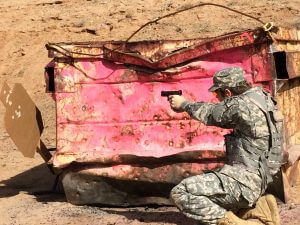Myths of Cover
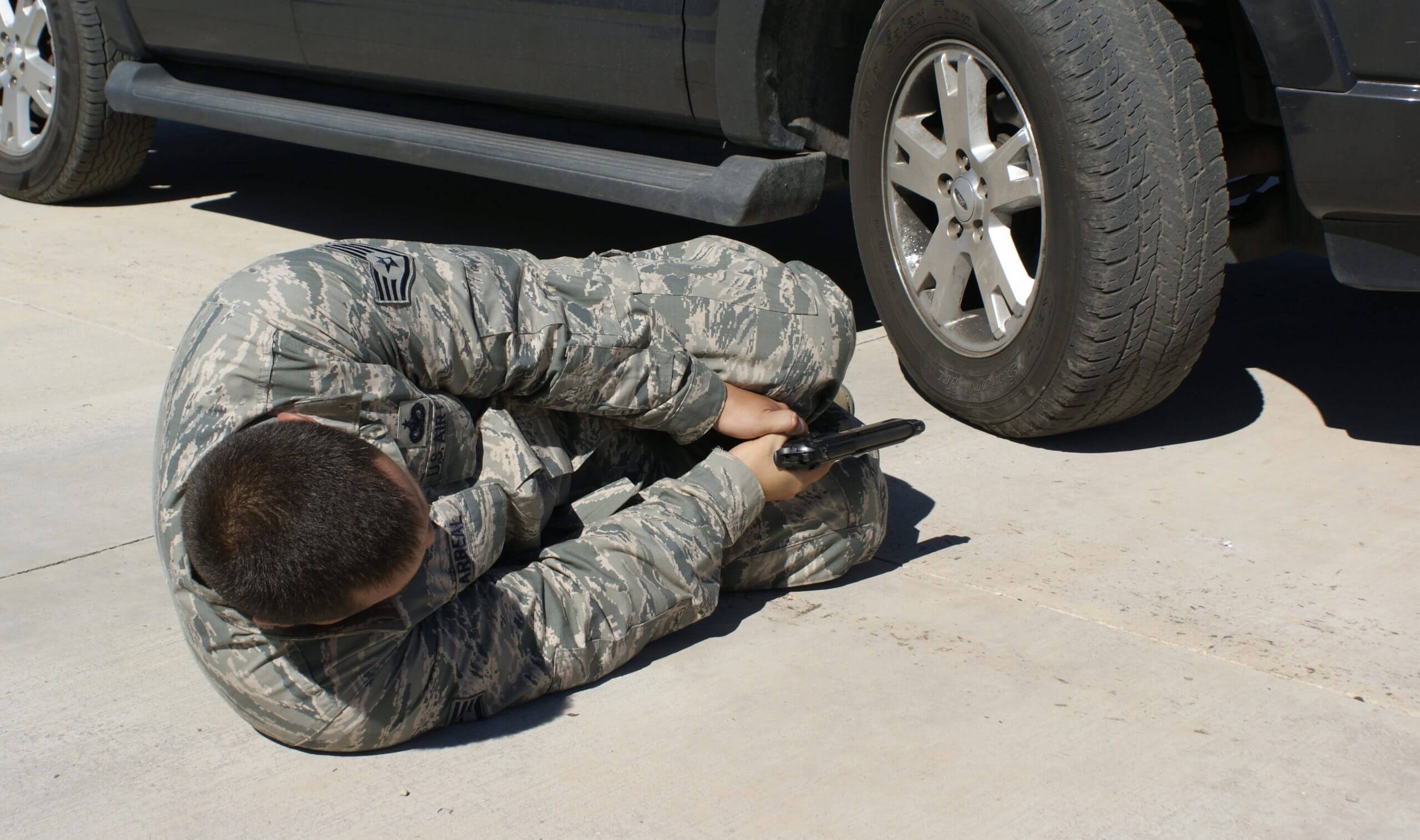
During a killing spree in Dallas, Texas, on July 7, 2016, an officer took cover behind a large pillar. Taking fire from a suspect who ran at him, the officer ducked back behind his cover, which was very effective at stopping bullets. It was also very effective at blocking the officer’s view of his battlespace. Using the pillar to mask his movement, the assailant changed directions and ran around the other side of the pillar, gunning down the officer from behind.
Most “tactical” training at least gives lip service to cover. IDPA competitors get penalized for not using (simulated) cover “correctly.” But many of the assumptions we have about how to properly use cover work best, if at all, against cardboard opponents who stand in one place, have no will to live, and are NOT shooting back or chasing you. After being shot in the chin with a .25 auto, an officer in Trumann, Arkansas, fell back to a covered position–just like he was trained to do. Unlike the paper targets the officer had trained against, though, the assailant was a “dedicated opponent” who pursued him around the cover and shot at him again. Each time the officer fell back, his murderer flanked him.
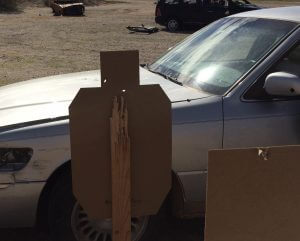
In our Myths of Cover class, you can explore the advantages–and learn to overcome the DISadvantages–of cover and concealment in detail. For example, in the photo above, the target “crouching” closest to the car got hit by a ricochet that bounced off the hood. The target set at the same height about a yard behind that target also took a hit in from the same round. Only the target a yard behind those was in a wide enough “slice of pie” to have the ricochet pass harmlessly over its head. Staying back from your cover is also a better way to keep from being flanked, by seeing more angles of approach and perhaps feet and ankles moving on the far side of a car or truck.
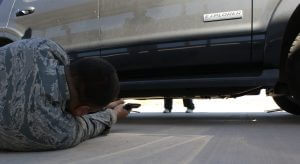
We’ll weigh the enhanced situational awareness of looking over cover against the lowered exposure of looking around it. You’ll practice kneeling and prone pivots to engage a flanking threat without exposing yourself to the reason you took cover in the first place.
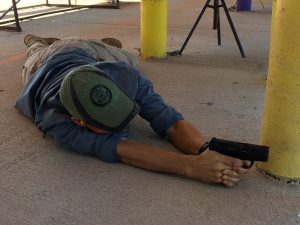
Like all Heloderm courses, Myths of Cover uses mixed training methodologies, including role playing exercises, HTE (human target engagement with Airsoft of marking cartridges), and live fire, to get you as much reality-based experience as possible, before you have to experience incoming fire for real. Use the contact form below if you are interested or want to know more.
